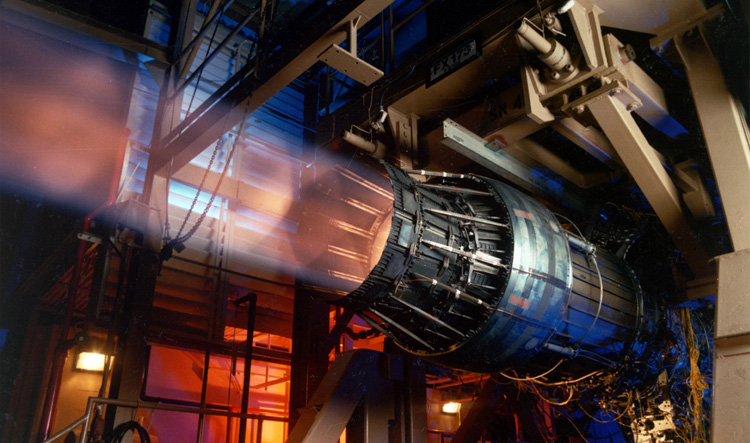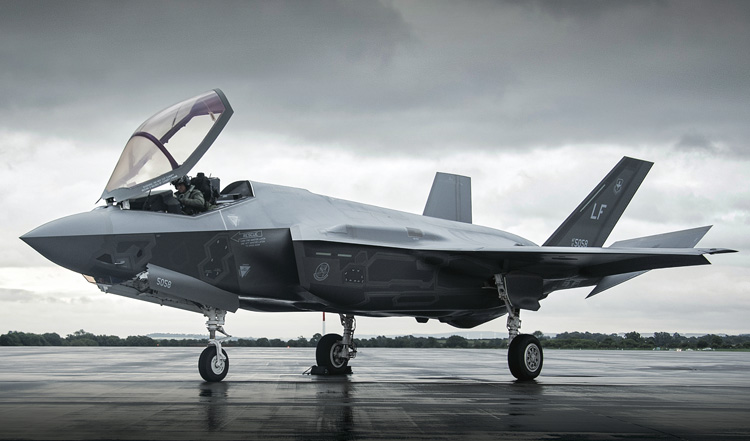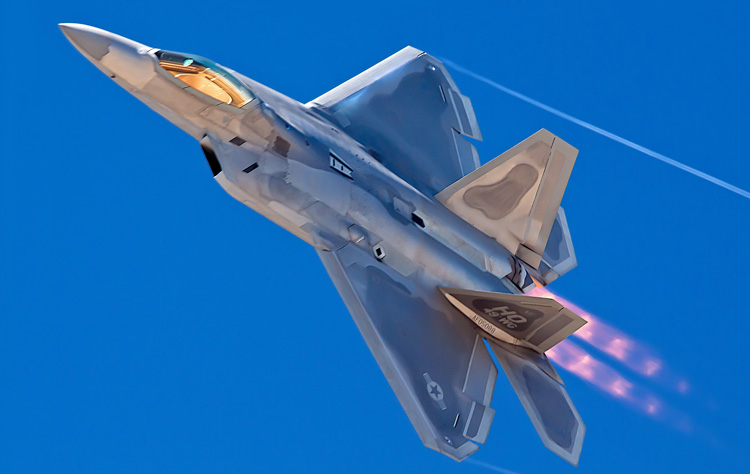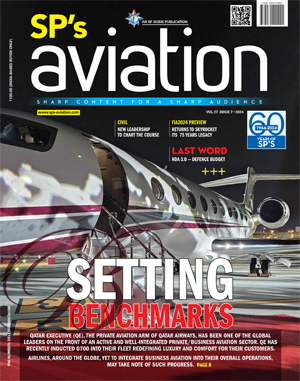INDIAN ARMED FORCES CHIEFS ON
OUR RELENTLESS AND FOCUSED PUBLISHING EFFORTS

SP Guide Publications puts forth a well compiled articulation of issues, pursuits and accomplishments of the Indian Army, over the years

I am confident that SP Guide Publications would continue to inform, inspire and influence.

My compliments to SP Guide Publications for informative and credible reportage on contemporary aerospace issues over the past six decades.
Military Range of Solutions from Pratt & Whitney
In an exhaustive discussion with SP’s Aviation, Ashmita Sethi, President and Country Head of Pratt & Whitney discloses the company’s range of engagements with the military sector

Pratt & Whitney
SP’s Aviation (SP’s): Would you like to remind us on your top military programmes you are working relentlessly these days?
Ashmita Sethi (Ashmita): With nearly 1500 engines and auxiliary power units in-service on a vast number of aircraft, Pratt& Whitney (P&W), for over seven decades, has formed the ‘engine-power’ of India and supports critical platforms for the Indian Air Force (IAF).
Pratt & Whitney’s 7,000 military engines in service, power tactical, strategic, mobility and rotary aircraft for 34 armed forces across the world. In India, our dependable F117 engines, that generate 40,400 pounds of thrust, power the IAF’s 11 Boeing C-17 Globemaster IIIs as they carry out military, humanitarian and peacekeeping missions. India’s young pilots earn their wings on the 75 PC-7 Pilatus trainers that are powered by our iconic PT6A engine.
When we look at some of key future modernisation campaigns for the IAF and Indian Navy (IN), some of the platforms in consideration supported by our engines include the PW100 powered Airbus C295 light transport aircraft for the IAF and the PW210-powered Sikorsky S-76D for the Naval Utility Helicopter.
P&W engines are the best choice to power India’s defence aircraft and in meeting its modernisation needs in well into the future
The Airbus C295 is a multi-role transport aircraft, powered by two PW127G engines that deliver industry leading low fuel consumption and carbon emissions. The IAF’s is looking at the C295 to replace its fleet of Avro 748 transport aircraft. The versatile and reliable PW127G is part of the PW100 engine family, and we have already delivered more than 400 PW127G engines to Airbus Defence and Space for numerous C295 customers and variants. With the latest materials, design technology and advanced engine control, delivering impressive dispatch reliability, easy engine operations and ease of maintenance – the PW127G emerges as one of the best choices for the C295’s (and the IAF’s) mission readiness and capabilities.

Pratt & Whitney has been working with the Indian industry for more than a decade on indigenous platforms as well. P&W and National Aeronautics Laboratory (NAL) have collaborated on NAL’s Multirole Light Transport Aircraft, the SARAS (MKI) – which is powered by the iconic PT6A engine.
As Pratt & Whitney, we continue to lead the way in bringing more power and improved fuel consumption, and delivering next-generation engine technologies tailored to meet the needs of our diverse customers.
At Pratt & Whitney, we remain committed to building capabilities for high value services that will help the forces to get the best from their next-generation products. We believe that P&W engines are the best choice to power India’s defence aircraft and in meeting its modernisation needs, well into the future.
SP’s: R&D plays a very major role for futuristic and evolving technologies. What kind of investments do you make on this front?
Ashmita: As makers of the world’s first operational fifth-generation engine, the F119 for USAF’s F-22, the world’s most advanced fighter engine, the F135 for the F-35, and the revolutionary GTFTM (Geared Turbo Fan) engine that delivers up to 20 per cent improvement in fuel efficiency and 50 per cent reduction in regulated NOx emissions – our history and expertise with advanced propulsion systems is unmatched in the world.

Our engines in-service continue to benefit from newer technological advancements being made every day. For example, Pratt & Whitney’s F100 engines have powered thousands of F-15s and F-16s for decades, and is the engine of choice for today’s F-15 and F-16 aircraft. The engine has benefited from the continued infusion of new technology since its introduction, and offers fifth generation technology in a fully modular architecture. The F100 is currently in production and we are committed to supporting the F100 fleet worldwide for decades to come; to include powering the new F-15EX.
Similarly, when we look at the PW100 and PT6A family for example, they too continue to evolve with the latest materials, design and technology, to deliver the durability and dependability our customers expect of us.
At Pratt & Whitney, it is about innovating and engineering a new and exciting future for aviation.
Our customers’ operational success and mission readiness depends on reliable engine performance, predictable maintenance planning and responsive support. As Pratt & Whitney we have access to vast R&D resources, ranging from artificial intelligence and big data, to manufacturing breakthroughs, emerging digital technologies and new engine development. We continue to use these to lead the way in bringing more power and improved fuel consumption, and delivering next-generation engine technologies tailored to meet the needs of our diverse customers.

SP’s: How do you ensure that you remain ahead on the technology curve?
Ashmita: At Pratt & Whitney, we believe that powered flight has transformed – and will continue to transform – the world. So for us, it is about innovating and engineering a new and exciting future for aviation.
From exploring smart factories, streamlining manufacturing and supply chains, using data analytics and real-time intelligence to predict and prevent engine disruptions before they occur; to advancing sustainable technologies through advancements in the revolutionary GTF engine – we continue to invest in new technologies and next-gen products that will shape the future of propulsion and keep us (and our customers!) ahead on the technology curve.
We continue to invest in new technologies and next-gen products that will shape the future of propulsion and keep us (and our customers!) ahead on the technology curve.
We also believe that India will be a key future player in helping us accelerate our step-change innovations – from a talent, R&D, and aftermarket point of view. That’s why our investment in the GTF MRO with AIESL is a significant one and we continue to ramp up our partnered investments in innovation, research, supply chain and sustainment. The NAL-Saras (MKI) is a good example of our partnership on local aircraft development programmes and another example would be our start-up collaboration in India.
India has emerged as a hotbed for aerospace startups in recent years that are exploring disruptive innovations in, especially in the AI, ML, VR/AR and 3D printing space. Pratt & Whitney is currently working with leading aerospace start-ups in country as part of the RTX Innovation Challenge – in partnership with T-Hub, Hyderabad. The challenge saw over 70 startups from 14 countries explore advanced solutions in the engine inspections domain. We are glad to see that two of the three start-up finalists Awiros and Utvyakta are homegrown.
Pratt & Whitney is currently working with leading aerospace start-ups in country as part of the RTX Innovation Challenge – in partnership with T-Hub, Hyderabad.
SP’s: Can you indicate on the current military programmes you are engaged with, Americas Europe, Asia, Australasia and West Asia?
Ashmita: We have more than 7,000 military engines in service with 34 armed forces worldwide. Our F135 engine powers the 5th Generation F-35 Lightning II fighter aircraft, which is (or will be) operated by the U.S. armed forces as well as 13 international customers: Australia, Belgium, Canada, Denmark, Israel, Italy, Japan, the Netherlands, Norway, Poland, Singapore, South Korea, and the United Kingdom. Additionally, we also have more than 3,800 F100 engines – powering F-15 and F-16 fighter aircraft – in service with 23 customers around the globe: the U.S. Air Force, Belgium, Chile, Denmark, Egypt, Greece, Indonesia, Israel, Iraq, Japan, Jordan, Morocco, the Netherlands, Norway, Pakistan, Poland, Portugal, Romania, Saudi Arabia, Singapore, South Korea, Taiwan, and Thailand. Our F117 engines, which power the C-17 Globemaster III transport, are in service with nine customers worldwide: the U.S. Air Force, India, Australia, Canada, Kuwait, NATO, Qatar, the UAE, and the United Kingdom.
We remain committed to providing our military customers with the most advanced, dependable products they can rely on—in the most demanding conditions.
SP’s: Would you like to share some of the key tie-ups you may have concluded with, recently on this front? Can you elaborate on the key features of edge, P&W must be relentlessly working towards maintaining over the competitions, on this front?
Ashmita: We remain committed to providing our military customers with the most advanced, dependable products they can rely on—in the most demanding conditions. Over the past 12 months, we have seen important campaign wins on both the F135 and F100 programmes. Poland and Singapore selected the F-35 platform for their national security needs and Morocco selected our F100 engine to power its new fleet of F-16 Block 72 fighter aircraft.





